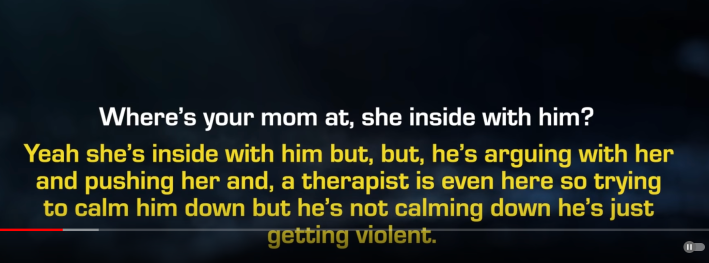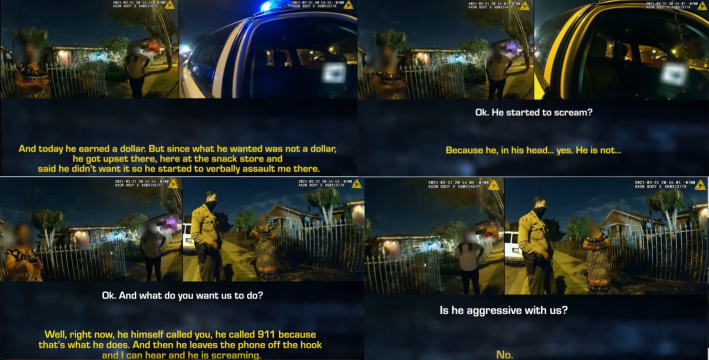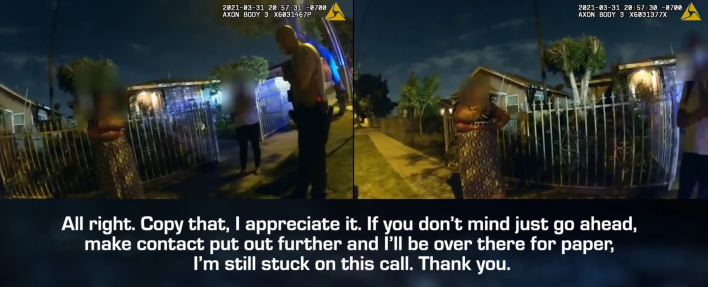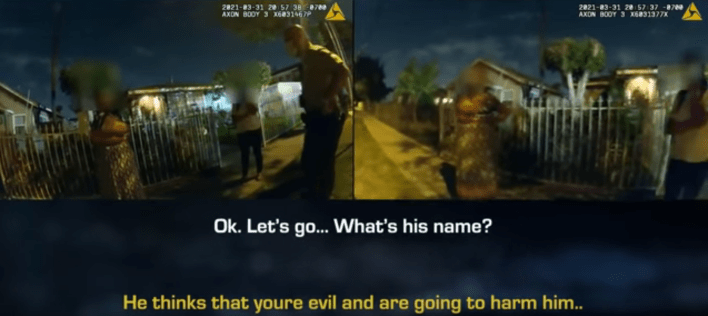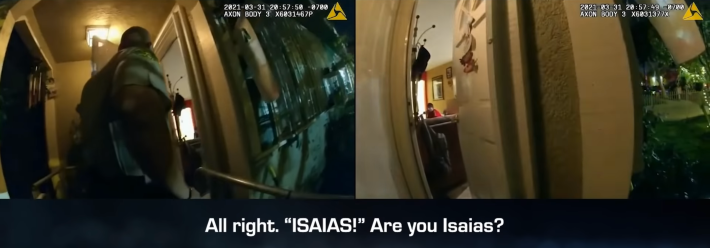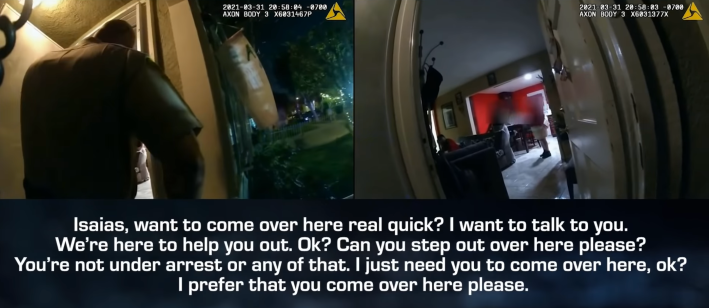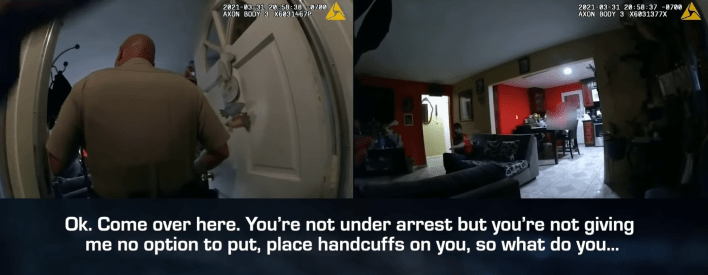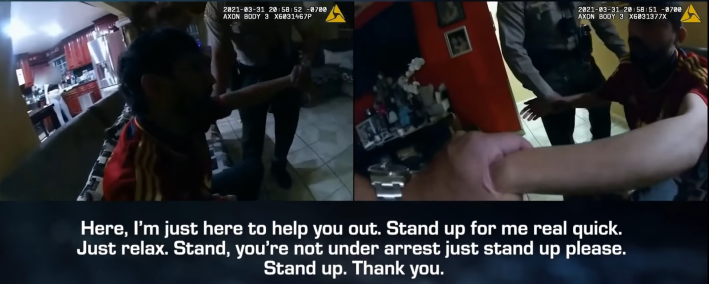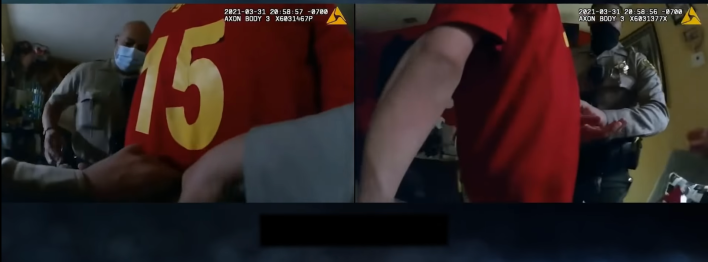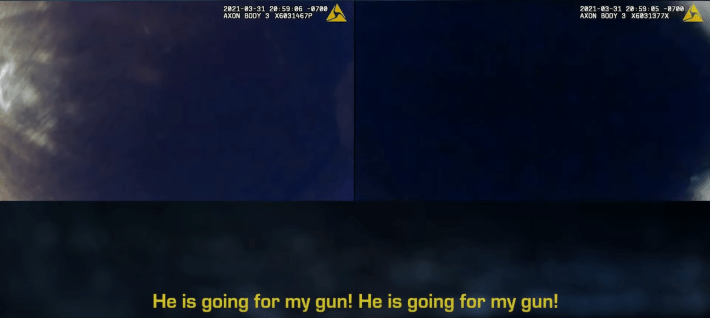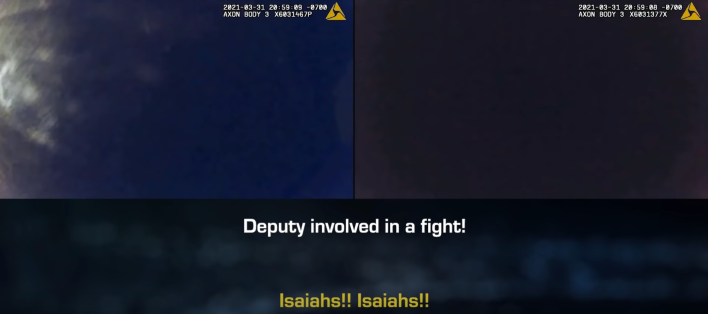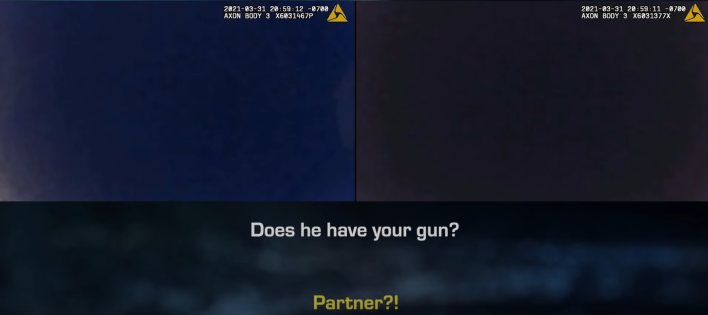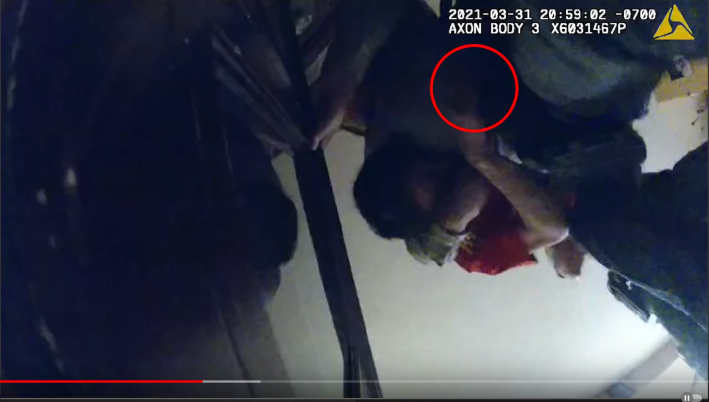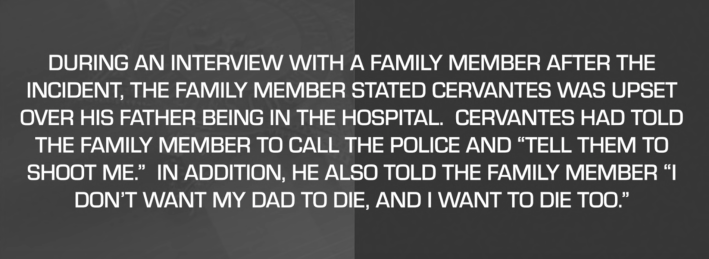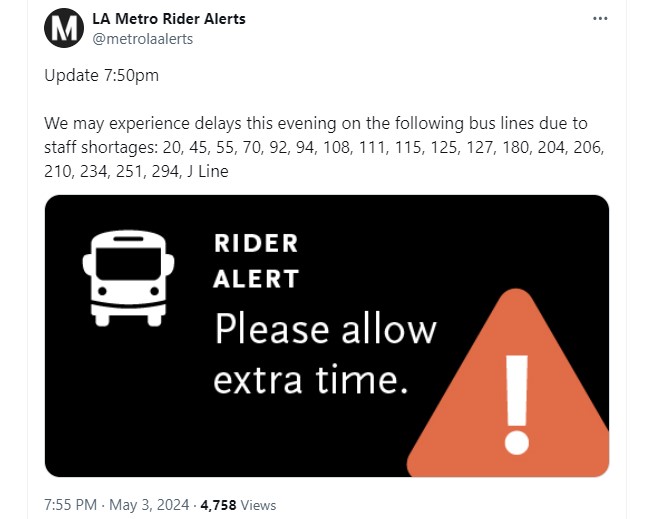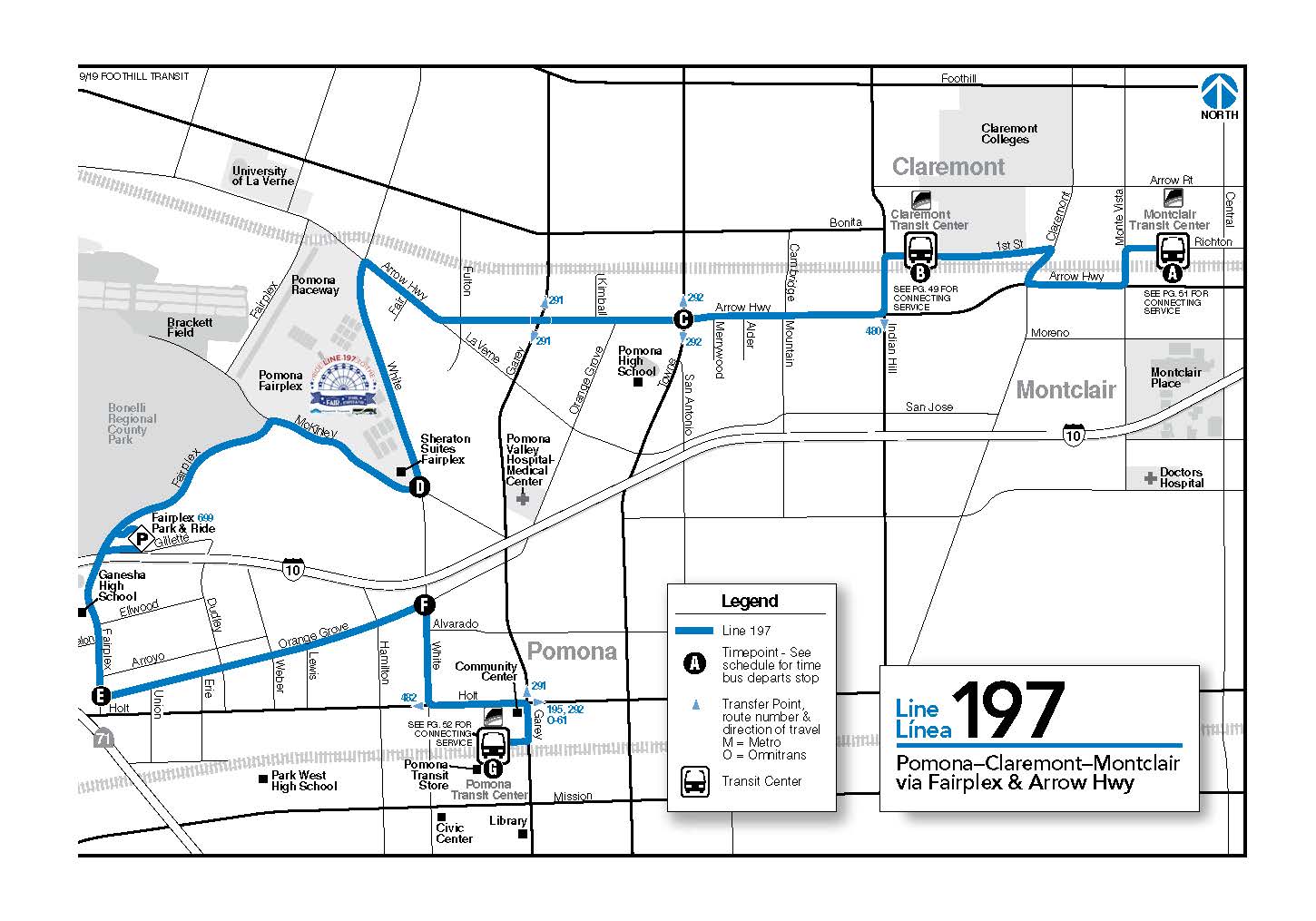Autistic Man Shot Within 83 Seconds of First Contact by LASD: Why Is this Still Happening?
9:38 PM PDT on May 7, 2021
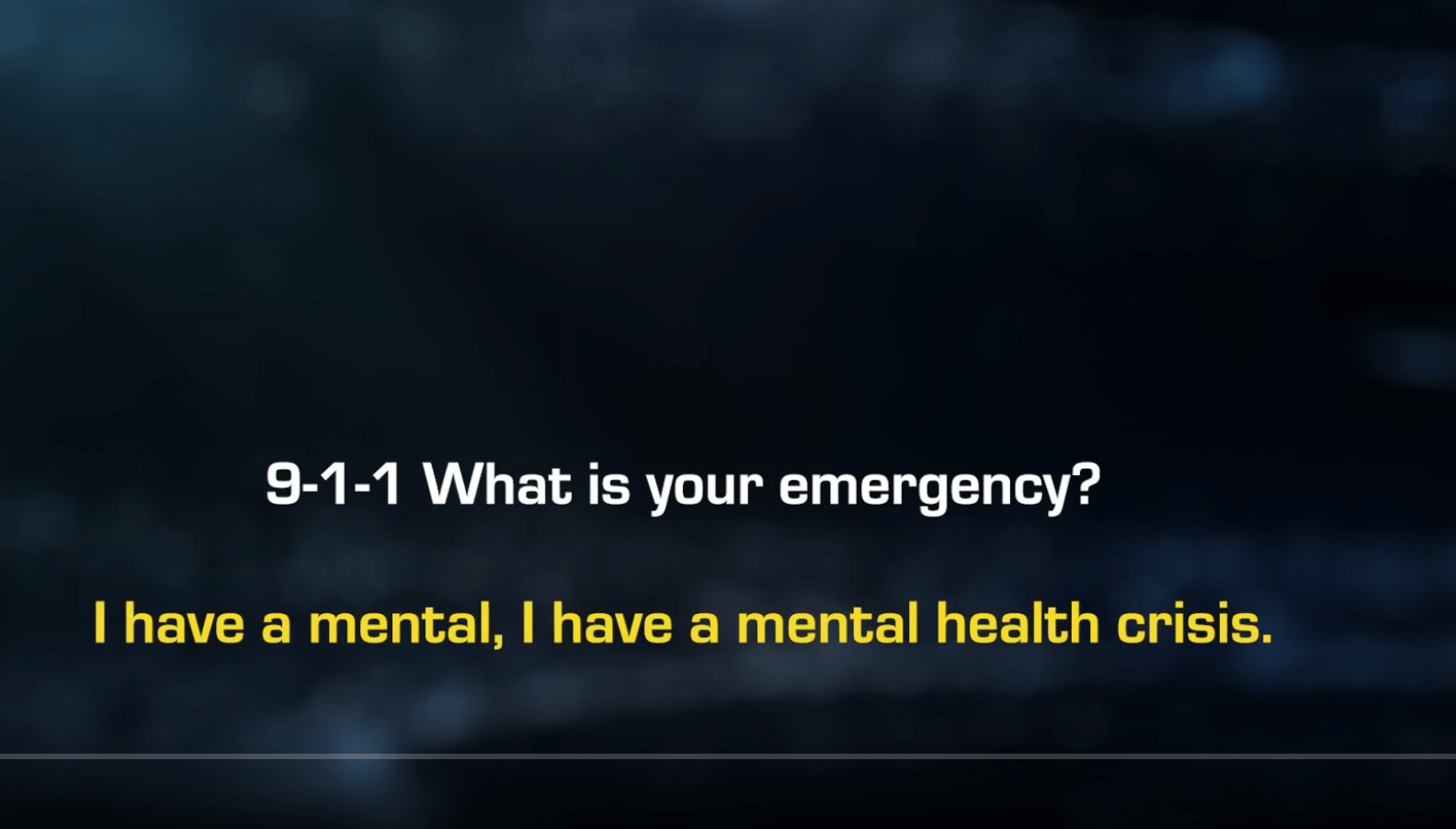
The 911 call made by Isaias Cervantes sister: she immediately announces the emergency is a mental health crisis but a Mental Evaluation Team is not dispatched nor do the responding deputies call one to the scene.
Eighty-three seconds.
That’s how much time passed between the moment deputies from the Los Angeles County Sheriff's Department (LASD) first stood at the door of the Cudahy home of Isaias Cervantes, a 25-year-old autistic man who is hard of hearing and suffering from depression and anxiety, and the firing of the shot that may have permanently paralyzed him.
Eighty-three seconds.
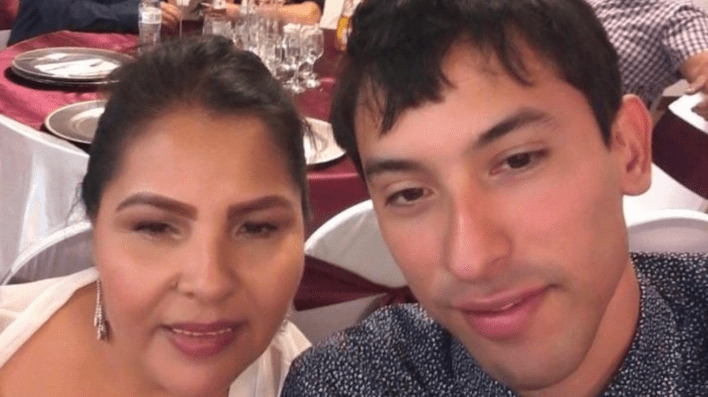
The brevity of the encounter and the violence of the outcome make abundantly clear just how urgent it is for calls of this nature to be diverted to unarmed first responders trained to aid those in crisis.
But then, so did the death of 39-year-old Eric Briceño, who suffered from mild schizophrenia, in East L.A. just last year. His parents had called 911 hoping for help managing the crisis he was in. Instead, as Alene Tchekmedyian reported in the L.A. Times, they found themselves watching helplessly as deputies first ignored their request to not startle Briceño out of sleep and then began beating the startled Briceño with batons, ultimately pepper-spraying him, restraining him, and tasing him at least seven times.
The death of 33-year-old Tracy Mayberry in the Greater Wilshire/Hancock Park area thirty years ago had also been an urgent wake-up call. Mayberry, a Black man, had been suffering from cocaine-induced paranoid psychosis when he broke into the home of Margaret Mansour, seized one of her sons, and screamed for protection before dropping the boy and running back out into the street. Terrifying as the experience was, another of Mansour's sons told the L.A. Times that, “It didn’t seem like [Mayberry] was really trying to hurt anyone. It was more like he was crazy. He kept saying we had to call the police.” But when officers from the Los Angeles Police Department (LAPD) approached Mayberry, who was, by that time, cowering outside, they told him to get on his knees and then beat him badly and at length with batons. Witnesses reported police continued to beat him after he was handcuffed and unconscious on the ground; Mayberry appeared to have died within a couple of minutes of being hogtied or "cord cuffed" - a technique known to cause asphyxiation, particularly among heavier individuals.
Yet, despite the brutality of the Mayberry homicide, LAPD would still not take significant steps forward in its ability to engage those in crisis for another decade. An appallingly framed L.A. Times column on the settlement Mayberry's family won against the city amplified the views of both the city attorney and LAPD at the time: namely, that Mayberry was, at the very least, partly responsible for his own death and that "the ethnically diverse jury had been unduly influenced by the repeated telecasts of the police beating of [Rodney] King, in part because Mayberry, like King, was African-American." [The King beating took place exactly four months after the assault on Mayberry.]
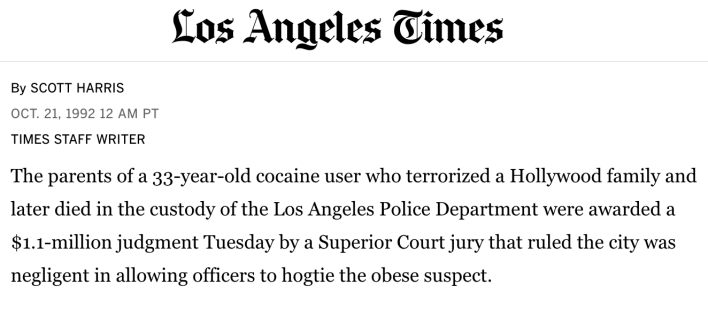
Notably, LAPD would not move to revisit its policy and training regarding hogtying until the following year, when a federal investigation was opened into the death of yet another Black man, Michael James Bryant. Bryant, a well-known barber in the Pasadena community, died after being tased while standing in a swimming pool, hogtied, and then laid down on his stomach in the back of a squad car. Even then, LAPD would not ban the practice until 1997, after several more people died from being hogtied by both LAPD and other area law enforcement agencies.
Similarly, it would take the federal civil rights investigation into the 1999 killing of 55-year-old Margaret Mitchell - a 100-pound Black woman with mental health issues - and subsequent consent decree for LAPD to finally move to restructure its mental health response system in 2001. Mitchell, an unhoused widow, had been shot after she picked up a long screwdriver in an effort to get bike patrol officers to leave her alone. They had stopped her at 4th and La Brea to investigate whether she had stolen the shopping cart she was pushing.
At the time, then-Chief Bernard Parks came under fire for lashing out at critics of the LAPD's response to the mentally ill and its treatment of Black unhoused people, in particular. He accused activists of using her death to push their own agenda and insinuated Mitchell's son had not cared enough about her to get her off the street. He also dismissed concerns about systemic racism and defended his officers as having acted appropriately after fearing for their lives.
A subsequent L.A. Times investigation into LAPD's encounters with the disabled and mentally ill - data generally not tracked by cities at that time - found that thirty-seven of the more than 320 people officers had shot between 1994 and 1999 had exhibited irrational behavior or symptoms of mental disorders during the encounter. In twelve of the shootings, the Times reported, "based on standards agreed upon by nationally recognized authorities on policing and mental illness, officers took actions that helped push confrontations to fatal conclusions; in another encounter, an autistic man was permanently paralyzed." The Times also found that LAPD investigators had "appeared to falsify information, distort witness statements or ignore damaging facts" in five of the shootings they looked into. Twenty-five of these shootings were fatal.
A few weeks after the Times' investigation was published, Parks released a slightly more measured statement. In it he acknowledged Mitchell's killing was tragic, but he continued to point to the threat the mentally ill posed to his officers. He also decried society for not taking better care of the mentally ill, and reiterated that officers were not professional mental health care givers - they were police.
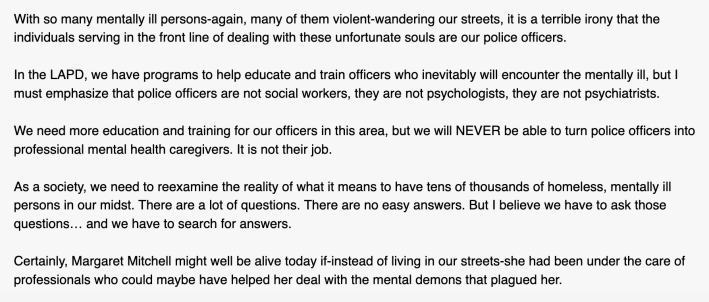
The adjustments LAPD found itself forced to make to its then-piecemeal mental health response infrastructure would go on to serve as a model other departments learned from. [See the 2001 consent decree assessment and recommendations from Lodestar and how LAPD distilled those recommendations for implementation.]
But while LAPD has seen some success in diverting calls and getting people in crisis access to services rather than jail cells, routine encounters in the streets with those struggling with mental health issues continue to involve violence. In 2010, for example, LAPD officers shot and killed Steven Washington, a 27-year-old autistic Black man, after they spotted him walking alone in Koreatown late one night and felt threatened by the fact that he walked toward them while ignoring commands to raise his hands. In 2014, officers killed 25-year-old Ezell Ford, a Black man who had been diagnosed bipolar and schizophrenic, when he resisted their attempt to stop and frisk him. In 2015, at least one-third of those shot by LAPD had documented signs of mental health issues.
Even just last year, during a presentation to the Police Commission, LAPD homeless coordinator Commander Donald Graham could be heard putting the blame for the 26 percent jump in incidents of use of force against unhoused persons in the third quarter of 2019 on the prevalence of mental illness among the unhoused. When pressed regarding this uptick and the fact that one-third of the uses of force recorded by the department in 2018 were against the unhoused, Graham offered no insights into what had precipitated the encounters, to what end force had been used, or the officer's role in the escalation.
Instead, he pledged that he would continue to work to raise “awareness” around the need for officers to deploy de-escalation techniques.
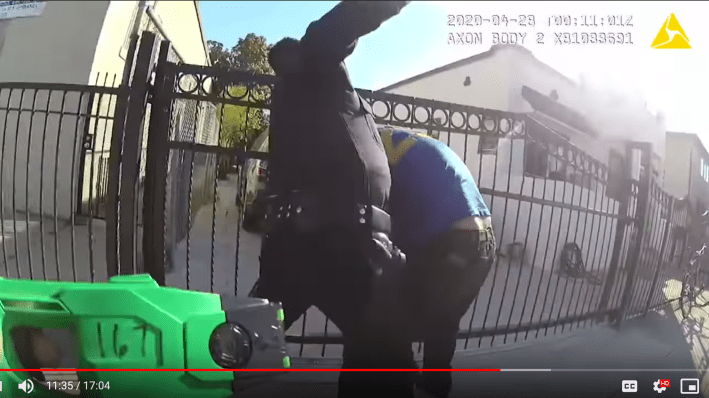
_________
LASD lags behind
With less external pressure put upon it, the Sheriff's Department has lagged even further behind LAPD in its capacity to respond to those in crisis. It did not begin to make significant changes until after the 2015 publication of the Blueprint for Change by the Mental Health Advisory Board convened by then-D.A. Jackie Lacey.
So, it wasn't until late 2016 that LASD launched its own four-day Crisis Intervention Training course to introduce deputies to the ways a subject's mental health issues or disabilities might manifest during an encounter. By the end of 2020, around 1800 deputies had taken the 32-hour course. [See the curriculum here; see a summary of a training on autism, here.]
The deputies didn't all attend willingly, according to an article authored by a mix of pyschologists and members of law enforcement who participated in the sessions (and whose write-up in Police Chief magazine LASD actually links to in their 2018-19 progress report). A number of students resented having been "volun-told" to take the course, said the authors, with some deputies openly voicing their unhappiness at both the evolution of policing to become more specialized (e.g. able to respond more appropriately to subjects in crisis) and media coverage of lethal uses of force against Black people that deputies saw as driving expectations of policing.
The deputies' "hooking and booking" approach to policing was so embedded within the culture of the department and such an obstacle to change that the course had to tackle it head on, according to the authors: "The team of four instructors, consisting of two sergeants and two department clinical police psychologists carefully addressed the question of 'What can we do in our class to minimize oppositional attitudes or a negative mind-set from patrol personnel because of their frustrations with mental health-related calls?'”
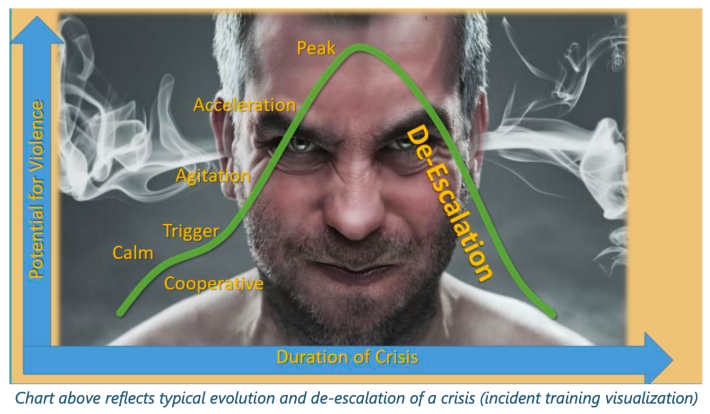
In 2016, LASD also finally began to expand its Mental Evaluation Team (MET) program. Until then, there had been only five two-person teams available to cover 42 cities and 140 unincorporated communities at any given moment. [An MET consists of a deputy sheriff and a licensed mental health clinician trained to de-escalate situations (including in the jails) and who can initiate involuntary acute psychiatric hospitalization.]
LASD's report on the expansion effort suggested progress had been hampered, in part, by poor data collection (making it hard to assess the level of need for METs), the fact that deputies in the field had tended not to call an MET because it might have taken an hour for them to arrive (making it harder to know how much more frequently MET would have been in demand), and the fact that there were so few experienced staff available to train the teams. Even with the overhaul of the data collection methodology in 2018, progress remains slow. Although the Civilian Oversight Commission has recommended expansion to 60 METs, LASD currently has just 33, and the next expansion phase will only bring the total number of teams to 45. [LASD has also proposed the establishment of a Crisis Intervention Bureau (CIB) to oversee training and bring MET and its other crisis response teams under one umbrella.]
LASD touts the utility of the METs in its status reports, suggesting that, in 2020, patrol officers would have “very likely” used at least “level-1” force to subdue subjects during 434 crises. Of those interventions, LASD estimates METs may have spared as many as 34 lives, including 14 in high-risk "suicide by cop" situations.
But to be useful, the METs actually need to be called to the scene. That means their deployment is largely reliant on (often untrained) deputies to either recognize a subject is in crisis or realize that they themselves are unprepared to handle a subject with a disability or mental illness without exacerbating a crisis.
In the case of both Briceño and Cervantes, for example, METs were not called to the scene despite the need for trained professionals being made clear from the outset. The footage released in the Cervantes case illuminates how that resulted in things escalating so quickly and how many opportunities there were for a different outcome. [What follows is a breakdown of the body cam footage; the images are not graphic, but the discussion does involve harm to a disabled person. Please proceed with care.]
_________
"I'm still stuck on this call"
When the 911 call comes in on the evening of March 31, the dispatcher takes the time to gather important information about Cervantes’ state of mind, his disability, and his behavior.
More than once, Cervantes’ sister explains he has mental health problems, including anxiety, depression, and obsessive compulsive disorder, and is also hard of hearing.
She says that although their therapist is there and trying to work with him, he isn’t calming down and is pushing their mother, scaring her.
When asked about his current location, the sister asks if the deputies can help get Cervantes to the hospital.
This is not a case of a crime in progress, in other words. This is a clear and direct call for assistance with someone in distress.
The dispatcher dutifully takes all this down and then communicates it to the deputies who, according to the critical incident video released by the sheriffs, went on to discuss non-lethal ways to subdue him on their way to the scene. [That specific audio is not included.]
When they arrive at the scene, the deputies then engage Cervantes' mother and his therapist at length in both Spanish and English. They discuss Cervantes' state of mind, how violent he is or isn't, why he's upset, how he has responded to police in the past and is likely to respond now, and what his mother wants to see happen.
His mother explains that she has tried to employ a reward system with him, but because of his disability, he doesn't always understand why he can't get what he wants. He doesn't get agitated this way often - the last time he was this upset had been in 2020, she says. And when the police have come to talk to him before, she says, he did not get violent with them. In fact, it was Cervantes who first called the police on this particular evening before his sister placed her call for help.
Though his mother does not explicitly say Cervantes is autistic (at least in the audio captured on camera), she explains multiple times that he has a significant disability - that he struggles to understand basic transactions and follow simple commands, especially when agitated - and that it is compounded by his mental health issues. She also notes that part of the reason they've instituted a reward system with him recently is because the pandemic has made him afraid to go outside, a detail that underscores the intensity of his anxiety.
The therapist, who has listened to this whole interaction, relays that she was also having a difficult time managing Cervantes' mood. Not only had he continued to push his mother and block her passage, he had also pushed the therapist.
Then, as one of the deputies is taking this history, he gets a call.
In front of both Cervantes' mother and therapist, he tells the dispatcher he is "stuck" on his current call.
It is a signal that he doesn't have a lot of time and that the sooner he can put this call behind him, the faster he can get on to the next. It also appears to serve as a cue for him to get moving.
Once off the radio, he says, "OK, Let's go."
It's only after he begins to walk up the path to the door that he asks for Cervantes' name.
Ideally, after hearing Cervantes was afraid to come outside and that even the therapist was struggling to get him to stop pushing his mother, deputies would have called for an MET. At the very least, one might expect they would have asked the therapist about calming techniques Cervantes had responded to in the past or approached him in a way that reflected the history they had been given.
Instead, they open the door and call out to him. It is now just before 9 p.m. - the body cams mark the time: 20:57:50.
No effort is made to build any kind of rapport or trust or relationship.
Instead, the deputy immediately reassures Cervantes he is not under arrest and asks that he come to the door.
The deputy makes that request at ~20:58:04. Cervantes can be seen seated on the couch, below, in the right cam view. He does not get up.
Cervantes does not want to come to the door. The deputy asks that Cervantes come to the door one more time at 20:58:27.
Cervantes gestures for the deputy to come in.
The deputy then deems him uncooperative and tells Cervantes - again, someone who is hard of hearing, who struggled to process the reasoning behind why he could not have a snack, and who his family thinks may need to be hospitalized - "You're not under arrest, but you're not giving me no option [but] to put, to place handcuffs on you..."
Just thirty-four seconds have passed since Cervantes was asked to come to the door.
_________
Sir! Please stop fighting! We're here to help you out!
From here, the situation erodes quickly.
The deputies step inside and ask what's going on, then each quickly takes hold of an arm as they tell him to stand up.
Cervantes is compliant at first.
He is told he is not under arrest, but seconds later, deputies can be seen attempting to handcuff him as they move his hands behind his back. It is now 20:58:57 - it has been just 67 seconds since the deputies first stood at the door calling out his name to make sure it was him.
As soon as they try to cuff him, Cervantes balks, likely panicked.
The struggle is swift and violent. Both deputies body cams are knocked off their chests; one of the cameras is pointed upward and Cervantes can be seen flailing in a headlock within five seconds of the start of the scuffle.
At 20:59:02, a fallen body cam captures Cervantes latching onto the deputy's belt. It does seem clear he had a hold of it - even a family member is heard telling Cervantes to let go of the gun after he is shot. But because there is no communication, we cannot know whether he grabbed it to have something to hang onto while in a headlock, whether he was afraid it would be used against him, whether he was intending to cause harm, or whether he even understood the gravity of what he was doing. And because both body cams were kicked around in the scuffle, we also don't have the benefit of a visual record.
But we do hear a deputy call out that Cervantes is going for his service weapon at 20:59:05 - three seconds after Cervantes was seen latching onto the deputy's belt.
The deputies panic.
One shouts, "Deputy involved in a fight!" (possibly into the radio) as the family tries to calm Cervantes down.
Because Cervantes is still in a headlock, the partner deputy's view of what is going on is obstructed.
He tries to get confirmation that Cervantes poses a threat.
It is not clear if that confirmation ever comes - the audio is garbled. And it's not clear what the partner deputy was able to see.
Either way, that deputy fires a shot moments later, at 20:59:13 - eighty-three seconds after the deputies first called out Cervantes' name. They then work to handcuff him, at one point barking, "Sir! Please stop fighting! We're here to help you out!"
_________
Blaming the victim
The critical incident video makes abundantly clear how differently the interaction might have gone if members of a trained and unarmed mental health response team with time to engage Cervantes had been the ones to knock on his door. Even just removing the presence of a firearm from the equation - regardless of deputy training - would have lowered both the stakes and risks to all involved tremendously.
The video also serves to highlight how much more concerned LASD is with justifying the shooting than assessing where it might have failed both the Cervantes family and its own deputies.
Cervantes is framed as having been volatile and posing a mortal threat. The narrator describes his demeanor as having "suddenly changed from cooperative to assaultive," causing him to "attack" one of the deputies when they moved to put his hands behind his back.
To underscore that claim, prior to playing the body cam footage in its entirety, the viewer is offered a freeze frame of Cervantes grabbing at the deputy's gun.
The video also highlights the injuries to one of the deputies, stating Cervantes "punched the deputy in his face and used his hand to gouge the deputy's face and eyes. This resulted in facial abrasions, bilateral eye contusions, corneal abrasions, and a cervical sprain." [Cervantes' three-week stay in the ICU and possible paralysis is not mentioned.]
No mention is made of the possibility that Cervantes believed he was being attacked or was reacting purely out of fear. Instead, LASD's first attempt at framing the story for City News Service (CNS) had centered the eye-gouging over the gun-grabbing, implying Cervantes had been shot as a result of an unprovoked attack on a deputy. The headline of the April 1 reprinted CNS brief on NBC4's website reads, "Man Shot After Attempting to Gouge at a Deputy's Eyes in Cudahy, Authorities Say." No mention is made of Cervantes' autism or mental health issues in the story; he is only described as having reportedly assaulted a family member. It was when deputies made contact with him after getting a domestic disturbance call, Deputy Eric Ortiz explained, that "...the suspect attacked one of the deputies, gouging at his eyes while attempting to disarm him."
Though the critical incident video's updated narrative focuses more on Cervantes' grab at the deputy's belt and gun, LASD perpetuates this aggressor narrative, with a distressing addendum tacked on toward the end.
During an interview with a family member, the note reads, the family member said Cervantes was upset about his father's hospitalization and had told them to call the police, saying, "Tell them to shoot me." He also reportedly told the family member that if his father died, "I want to die too."
The inclusion of this information is meant to plant the seed that Cervantes - a disabled man who his family has repeatedly stated has the understanding of a six-year-old child - deliberately lured police to his home so he could provoke a suicide-by-cop.
The note does not mention that the "interview" referenced is the interrogation family members were subjected to for several hours after the shooting - an assault of a different kind on the family that both compounded their trauma and made them feel like the sheriffs saw them as criminals. And this was after having been ejected from their own home while Cervantes still lay injured and cuffed on the floor and not allowed to attend to his twin brother - a wheelchair user who has cerebral palsy and was in another room - until after deputies had swept the place to make sure there were no more threats.
_________
Which way, LASD?
Despite the obvious need for a stronger network of alternative responders that can engage mentally ill or disabled people in crisis and their families in more appropriate ways, L.A. County Sheriff Alex Villanueva has openly pushed back at attempts to move the county in that direction.
During a facebook livestream last October, the embattled sheriff scoffed dismissively at the County Board of Supervisors' unanimous September 29 decision to move forward with the effort to reimagine the 911 system as a regional coordinated crisis call center. The 911 system was “the one thing that works in county government," he said. "And it’s probably because [the sheriffs] run it.”
Villaneuva is, of course, well aware that the county's plans go beyond just triaging emergency calls. They are the product of the Alternatives to Incarceration (ATI) work group - a body that includes LASD representatives - that was created in early 2019 to map out an action-oriented framework and implementation plan scaling “Care First, Jail Last” alternatives. The larger goal of the project was to address the disproportionate incarceration of Black and brown people as well as of substance abusers of all stripes (who comprise ~60 percent of those released every day), and the mentally ill of all stripes (those with a serious mental illness are estimated to comprise almost a third of those in jail at any given moment). In addition to revamping the 911 system, this more comprehensive approach to reform and diversion will include investments in crisis response team infrastructure as well as the urgent behavioral health care facilities and programs needed to receive people in crisis. Restorative care villages, like the one below, are an outgrowth of this approach and the effort to finally close Men's Central Jail once and for all.
The Hilda L. Solis Care First Village is a testament to a "Care First, Jails Last" approach in which we leverage innovative solutions to address homelessness in Los Angeles County in record time! Learn more about the Hilda L. Solis Care First Village at the video below: pic.twitter.com/GFvkDHI2ju
— Hilda Solis (@HildaSolis) May 1, 2021
A consolidated emergency system would draw on some of the resources the county already has in place while forcing it to build both a more robust network of alternative responders and the county's capacity to properly identify and coordinate the right set of responders. It would also help ensure that law enforcement were available to be sent to the calls where they were truly needed, instead of bogged down with calls that could have been handled by other entities. [For ex., see a breakdown of LAPD calls for service here and the L.A. Times' dive into the numbers here.]
But rather than embrace such a shift, Villanueva warned the board to keep their "paws off" the 911 system. "Leave it alone," he said. "We're not giving up 911."
During the several minutes he dedicated to the reimagining effort, Villanueva mocked both the motivation behind it and the years of work already invested in it. He accused the board of wanting to create a "consequence-free environment outside of the jails."
"They have all these fancy terms - 'care first, jail last,'" he complained. But "'offender first and victim last' is what it actually means. When they say 'care first,' that means they only care about one person: the criminal offender. They do not care about victims of crime."
He also mocked the concerns that communities of color, and Black Angelenos in particular, who officers throughout the county disproportionately use force against, have voiced about their mistreatment by armed law enforcement. "Imagine if you triage 911," he said. "That means when you call 911, you’re going to talk to a county dispatcher that is going to decide, 'Well, is it culturally appropriate and sensitive? Or is it really an emergency or just a crisis that we’ll send you an unarmed person so that you’re not going to be afraid?'"
"They call it 'triaging' so that...armed deputies who are 'scary' are not going to go out there and 'harm' the residents," he said, feigning fear (below; click image to visit the livestream). "That's a bunch of nonsense!"
"The average Joe welcomes the sight of tan and green," he said. They "know that they’re safe in our presence." Those that thought otherwise, he declared emphatically, were "the criminal community speaking through the Board of Supervisors."
Dog-whistles and fear mongering aside, the shift to the new county 911 system is not going to happen immediately - the motion put forth by Supervisor Janice Hahn back in September only allows that redesign process to take the next step forward. In the meanwhile, LASD has established a direct line to the Department of Mental Health in order to be able to divert some calls to their help line. [Graphic taken from the Department of Mental Health's recommendations for the board.]
The process to redirect crisis calls within the city of L.A. is going somewhat more smoothly.
Last year, the city council voted to study ways to divert nonviolent calls for service involving the unhoused and others in crisis and facilitate the transport of those in crisis via therapeutic vans. Unlike Villanueva, Chief Michel Moore has been more willing to acknowledge specialized service providers could free the rank-and-file up to perform their core functions. This past January, LAPD launched a pilot program integrating Didi Hirsch Mental Health Services into L.A. fire and police dispatch, making it possible for psychiatric professionals to be involved on calls involving suicidal crisis or severe emotional distress. A few weeks later, LAPD announced they would be expanding their SMART unit capacity and dispatching those units directly to relevant calls (as opposed to waiting for a responding officer to call them to the scene).
But advocates want to see police out of these kinds of engagements altogether. In their statement on the Cervantes shooting, Disability Rights California argues that "a radical reimagining of law enforcement in both criminal and disability justice" will be needed to minimize contact between people with disabilities and law enforcement, reinvest in appropriate responders and services, and limit the reach of institutions that routinely harm marginalized groups.
In their budget presentation to the city council Thursday night, representatives of the People's Budget L.A. Coalition led by Black Lives Matter - Los Angeles went much further, pointing to the generational trauma decades of disinvestment, suppression, and mass incarceration have inflicted on L.A.'s Black and brown communities. For too long, the systematic criminalization of the forms in which that trauma has manifested is what has justified the repressiveness with which those communities to continue to be policed. The solution, the presenters argued, was a more robust system of community-led care aimed at harm mitigation and violence prevention and a sustained investment in the services and opportunity infrastructure needed for these communities to thrive.
In the meanwhile, Cervantes' family is left to wonder if they will ever get justice for Isaias.
LASD, for its part, seems content to ignore the explicit and lengthy discussion of Cervantes' mental state captured in their own critical incident video so they can continue to blame the family. While speaking to Fox 11 recently, Villanueva not only categorically denied the deputies had been informed Cervantes was disabled, he said LASD was now setting up a system so families could alert the department regarding a loved one's intellectual or physical challenges so that "tragic consequences" could be avoided during future calls for service.
Find me on twitter: @sahrasulaiman
_________
LASD has released the critical incident video for the shooting of Isaias Cervantes to their YouTube channel. You can find that here.
Conversations around how to reshape policing continue apace. As part of the effort to create unarmed crisis response infrastructure, L.A. City Council is currently looking for feedback from the public on what such a program should look like. Please visit the form found here for more information.
Find the official gofundme for Isaias Cervantes here.
Sahra is Communities Editor for Streetsblog L.A., covering the intersection of mobility with race, class, history, representation, policing, housing, health, culture, community, and access to the public space in Boyle Heights and South Central Los Angeles.
Read More:
Stay in touch
Sign up for our free newsletter
More from Streetsblog Los Angeles
This Week In Livable Streets
Bike Month continues, Metro 91 Freeway widening, Destination Crenshaw, Culver City Bus, Santa Monica MANGo, Metro bike lockers, Metro Sepulveda Transit, and more
San Fernando Valley Bus/Bike Updates: G Line, Roscoe Bus Lanes, Laurel Canyon Bike Lanes
Short newly protected bike lane on Laurel Canyon Blvd, extensive NSFV bus improvements under construction this month, and scaled-back G Line plans should get that project under construction this summer
No, L.A. City Does Not Always Add Required ADA Ramps During Resurfacing, But They Should
StreetsLA GM Keith Mozee "Any time we do street resurfacing, it is considered an alteration, which requires ADA ramps to be installed."

